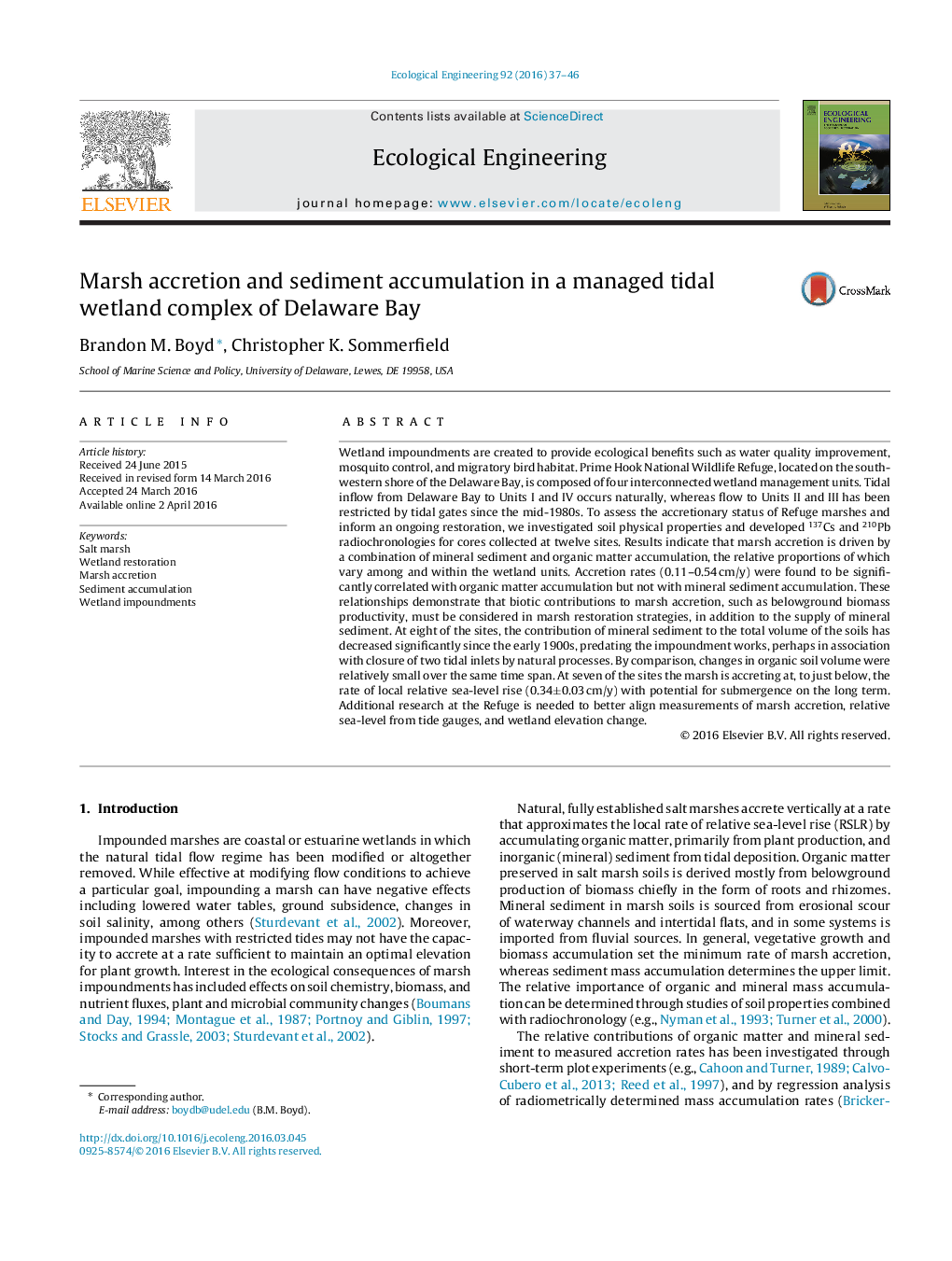| Article ID | Journal | Published Year | Pages | File Type |
|---|---|---|---|---|
| 4388607 | Ecological Engineering | 2016 | 10 Pages |
Wetland impoundments are created to provide ecological benefits such as water quality improvement, mosquito control, and migratory bird habitat. Prime Hook National Wildlife Refuge, located on the southwestern shore of the Delaware Bay, is composed of four interconnected wetland management units. Tidal inflow from Delaware Bay to Units I and IV occurs naturally, whereas flow to Units II and III has been restricted by tidal gates since the mid-1980s. To assess the accretionary status of Refuge marshes and inform an ongoing restoration, we investigated soil physical properties and developed 137Cs and 210Pb radiochronologies for cores collected at twelve sites. Results indicate that marsh accretion is driven by a combination of mineral sediment and organic matter accumulation, the relative proportions of which vary among and within the wetland units. Accretion rates (0.11–0.54 cm/y) were found to be significantly correlated with organic matter accumulation but not with mineral sediment accumulation. These relationships demonstrate that biotic contributions to marsh accretion, such as belowground biomass productivity, must be considered in marsh restoration strategies, in addition to the supply of mineral sediment. At eight of the sites, the contribution of mineral sediment to the total volume of the soils has decreased significantly since the early 1900s, predating the impoundment works, perhaps in association with closure of two tidal inlets by natural processes. By comparison, changes in organic soil volume were relatively small over the same time span. At seven of the sites the marsh is accreting at, to just below, the rate of local relative sea-level rise (0.34±0.03 cm/y) with potential for submergence on the long term. Additional research at the Refuge is needed to better align measurements of marsh accretion, relative sea-level from tide gauges, and wetland elevation change.
